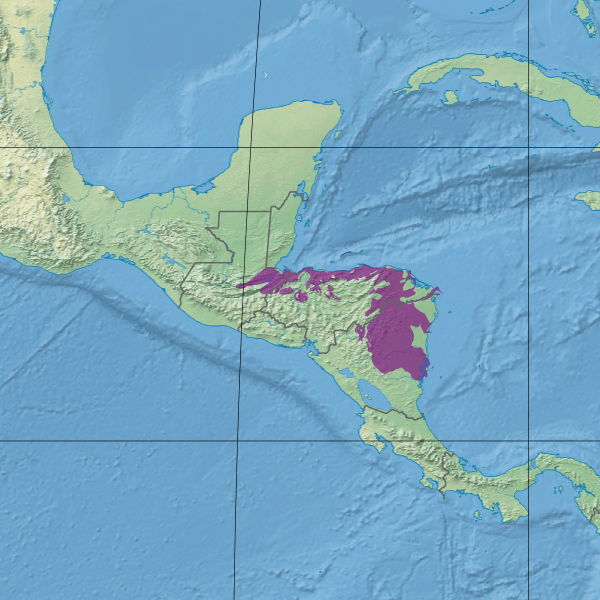Central American Atlantic Moist Forests: A Natural Jewel of Biodiversity and Conservation
The Central American Atlantic moist forests ecoregion is found along the Caribbean coastal lowlands of Honduras, west into Guatemala and south into eastern Nicaragua. The ecoregion contains Central America's most significant single fragment of natural forest.
Central American Atlantic Moist Forests
A Natural Jewel of Biodiversity and Conservation
The Central American Atlantic moist forests ecoregion stands as evidence of the natural wonders of Central America, specifically along the Caribbean coastal lowlands of Honduras, extending west into Guatemala and south into eastern Nicaragua. Covering a significant portion of the region, this ecoregion is home to Central America's most significant single fragment of natural forest, making it an invaluable area for biodiversity and environmental conservation.
Geographical Overview
Spanning an impressive 700 kilometers (435 miles) from the valley of Lake Izabal in southeastern Guatemala, across the northern coast of Honduras, and further south into the eastern half of Nicaragua, the ecoregion is a 50 kilometers (30 miles) wide strip that covers a total area of 89,979 square kilometers (34,741 square miles). The landscape is characterized by a relatively flat terrain with foothills in the western sector, and the elevation ranges from sea level to 1,000 meters (3,280 feet).
Climate
The ecoregion experiences a Tropical monsoon climate, marked by consistent temperatures throughout the year and a distinct dry season. Annual rainfall varies across the region, reaching 5,000 millimeters (196 inches) in Guatemala forests, 2,000 millimeters (78 inches) in Honduras, and ranging from 2,750 to 6,000 millimeters (108 to 236 inches) in Nicaragua.
Flora
Approximately half of the ecoregion is covered by closed-canopy tropical broadleaf evergreen forest, with some areas converted to agricultural use. Common tree species include gumbo-limbo, crabwood, Spanish cedar, kapok, elm, mahogany, and Terminalia amazonia. Unique species like mameyito, Brazilian fire tree, and various epiphytes thrive at higher elevations. In contrast, the highest altitudes host elfin forests with distinctive flora like Clusia salvinii, Magnolia sororum, and hot lips.
Fauna
The Central American Atlantic moist forests are a haven for biodiversity, with rich ecosystems supporting various species. While endemism rates are relatively low, the region is recognized as an Endemic Bird Area. Notable restricted-range birds include the snowy cotinga, streak-crowned antvireo, and grey-headed piprites. The area is also inhabited by mammals such as oncilla, olingos, margay, Geoffrey's spider monkey, capuchin, mantled howler monkey, and the giant anteater.
Conservation Efforts
Despite facing threats such as habitat conversion, the ecoregion is not extensively protected. However, some significant areas remain under formal protection, showcasing the commitment to preserving its unique ecosystems. For instance, Chocon-Machacas in Guatemala was established to protect manatee populations in Rio Dulce. Additionally, the Río Plátano Biosphere Reserve in Honduras is home to the largest natural forest in the country and the ecoregion. Pico Bonito National Park, also in Honduras, is crucial in preserving pine-oak and moist forests.
Conclusion
The Central American Atlantic moist forests ecoregion is a vital natural treasure, housing diverse ecosystems and playing a critical role in global biodiversity. Efforts to protect and preserve this unique environment are essential for the well-being of both local communities and the planet as a whole. As a living classroom of ecology, this ecoregion provides valuable lessons on the delicate balance of nature and the importance of conservation.

Map illustrating the extent of the Central American Atlantic moist forests (in purple).
